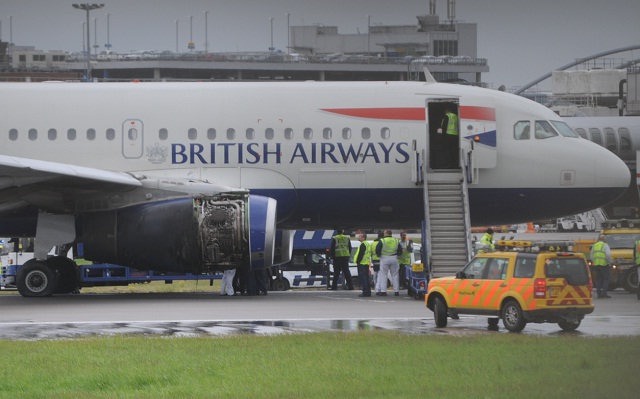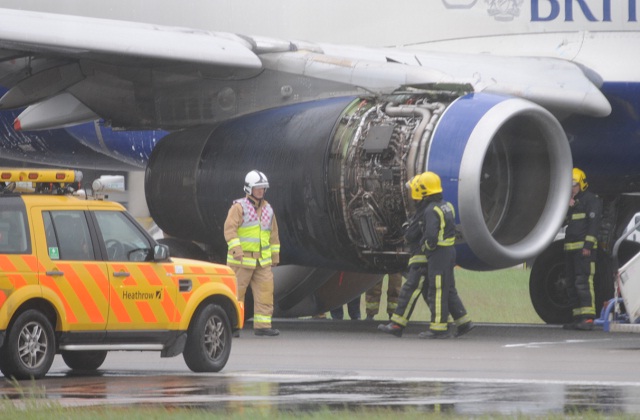UK investigators have opened an inquiry into the British Airways Airbus A319 incident at London Heathrow which resulted in substantial damage to both engines.
Images show that the fan cowl doors on both engines have been torn away, with clear discolouration on the rear of the starboard International Aero Engines V2500 powerplant.
The UK Air Accidents Investigation Branch says it has started a probe into the event involving the aircraft (G-EUOE) which had just taken off as flight BA762 to Oslo.
 |
|---|
 |
|---|
Marc-Antony Payne |
While there is no immediate indication over the cause of the dual cowl door loss, the A320 family has been involved in multiple incidents of doors being lost as a result of failure to latch them shut after engine maintenance.
The aircraft operated several services on 23 May. BA has yet to confirm whether the A319's departure to Oslo, on 24 May, was its first flight of the day.
Nor BA has indicated whether any engine maintenance was conducted on the aircraft beforehand. It has attributed the incident to a "technical fault".
Airbus last year underlined the problem of fan cowl door latching, pointing out the risk of runway debris contamination because parts in such cases frequently separate on take-off.
The problem has repeatedly surfaced. After an event at London Gatwick in 2000, involving a V2500-powered Airtours A320, investigators discovered seven other occurrences in the previous eight years.
Airbus noted 18 instances of fan cowl loss, of which 13 had been on V2500s, in a subsequent bulletin in 2007. But it has been reluctant to pursue a warning system for pilots, opting instead for simpler alternative strategies.
It has developed several modifications intended to ease detection of an unlatched cowl, including fluorescent paint on the latches to highlight their position, as well as mechanisms to make the residual gap more noticeable if the door is not closed properly.
Specific warning labels have been applied to the cowl while new dedicated tools have also been created, for both engine types, to be applied during cowl opening.
Source: Air Transport Intelligence news



















